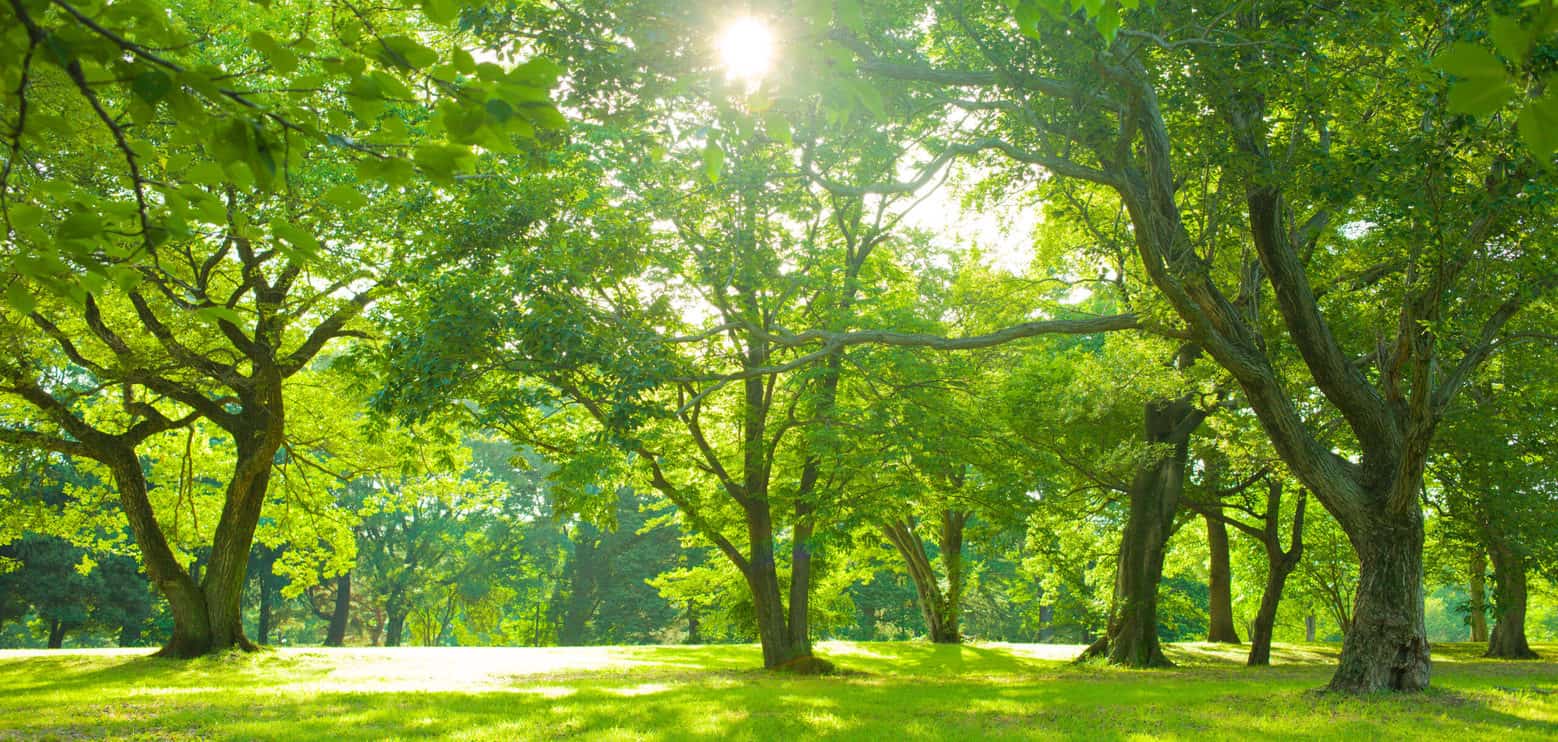Home>Gardening Techniques>Plant Care>Why Do Goats Climb Trees


Plant Care
Why Do Goats Climb Trees
Published: October 26, 2023
Discover the fascinating behavior of goats climbing trees and learn how proper plant care can help create an ideal environment for these incredible creatures.
(Many of the links in this article redirect to a specific reviewed product. Your purchase of these products through affiliate links helps to generate commission for Chicagolandgardening.com, at no extra cost. Learn more)
Table of Contents
Introduction
Goats are fascinating creatures known for their agility and adaptability in various environments. While we commonly associate goats with grazing on the ground, there is a lesser-known behavior that has captured the attention of biologists and nature enthusiasts alike – goats climbing trees. Yes, you read that right! These hoofed animals have displayed an extraordinary ability to climb trees with remarkable balance and dexterity.
This tree-climbing behavior has sparked curiosity and intrigue, leaving many wondering why goats engage in such an unusual activity. In this article, we will delve into the evolutionary adaptations of goats, explore the reasons behind their tree-climbing behavior, and examine the potential benefits it offers these remarkable creatures.
Goats have a rich history of evolving to thrive in challenging environments, whether it be steep mountainous terrain, arid deserts, or temperate forests. Their unique anatomy and physiology have equipped them with the ability to adapt to a wide range of habitats. With sharp hooves and strong muscles, goats are well-suited for climbing and navigating through precarious landscapes.
(Content continues…)
Evolutionary Adaptations of Goats
Goats are members of the Bovidae family and have evolved over millions of years to survive in diverse ecosystems. One of the key evolutionary adaptations of goats is their remarkable agility and climbing prowess.
Their hooves play a vital role in their ability to climb. Unlike other animals with solid hooves, such as horses or cattle, goats have split hooves with a flexible, rubbery sole. This unique foot structure provides them with increased gripping power, allowing them to navigate slippery surfaces and climb trees with ease.
Furthermore, goats have a well-developed sense of balance, thanks to their strong core muscles and highly flexible spine. This enables them to maintain stability even on narrow branches or uneven surfaces. Their ability to jump and leap also aids in their climbing, allowing them to reach higher branches or traverse across gaps in the treetops.
In addition to their physical adaptations, goats have also developed a keen sense of spatial awareness. They possess excellent depth perception, allowing them to accurately gauge distances and make precise jumps. This keen perception, combined with their nimble movements, allows them to navigate complex terrain, including tree branches, with remarkable precision.
(Content continues…)
Tree Climbing Behavior
While the ability of goats to climb trees may seem unusual, it is actually a behavior rooted in their natural instincts and survival strategies. Tree climbing offers goats a myriad of benefits, ranging from accessing food sources to escaping predators.
One of the primary reasons goats climb trees is to reach foliage that is otherwise out of their reach. Trees often provide a rich food source, especially during periods of limited grazing availability or in arid regions where vegetation on the ground may be scarce. By climbing trees, goats can access leaves, fruits, and tender twigs that provide essential nutrients.
In addition to food, trees can also offer shelter and protection from predators. By climbing to higher branches, goats can escape ground-dwelling predators or even large predators like lions or wolves. The elevated position gives them a vantage point to monitor their surroundings and detect potential threats.
The tree climbing behavior of goats also serves as a means of social interaction and communication. In regions where trees are scarce, goats may compete for limited climbing spots, resulting in a hierarchy within the group. The dominant goats often secure the higher branches, while the subordinate ones take lower positions, establishing a social order through their tree-climbing behavior.
In some cases, goats may exhibit tree climbing behavior simply out of curiosity or for entertainment purposes. They are known for their playful nature, and climbing trees can provide mental stimulation and a sense of adventure.
(Content continues…)
Benefits of Tree Climbing for Goats
The tree climbing behavior displayed by goats offers a range of benefits that contribute to their survival and well-being in their natural habitats. Let’s explore some of the key advantages:
- Access to Food: Climbing trees allows goats to reach foliage and vegetation that is otherwise inaccessible on the ground. This enables them to diversify their diet and consume a wider range of nutritious leaves, fruits, and twigs that provide essential vitamins and minerals.
- Escape from Predators: By ascending into the treetops, goats can seek refuge from ground-based predators. This offers them a higher vantage point, providing enhanced visibility and time to react to potential threats. It serves as a valuable defense mechanism, protecting them from predators such as lions, wolves, and coyotes.
- Social Hierarchy: Tree climbing behavior can establish a social hierarchy within goat groups. Dominant goats often secure higher positions in the trees, while subordinate goats occupy lower branches. This hierarchy can aid in social cohesion and reduce conflicts within the group.
- Mental Stimulation: Goats exhibit curious and playful behavior, and tree climbing offers them mental stimulation and entertainment. It allows them to explore their surroundings, engage in physical activity, and satisfy their inherent need for exploration and adventure.
- Adaptability: The ability to climb trees showcases the adaptability of goats to various environments. This behavior enables them to thrive in habitats with limited ground vegetation, arid climates, or steep terrains. Their agile climbing skills grant them access to resources that are crucial for their survival.
It’s important to note that while tree climbing behavior offers these benefits, it may not be exhibited by all goats. Factors such as habitat, availability of trees, and individual goat behavior can influence the prevalence of tree climbing within a population.
(Content continues…)
Possible Explanations for Tree Climbing Behavior
The tree climbing behavior displayed by goats can be attributed to a combination of factors, including evolutionary adaptations, ecological conditions, and social dynamics. While the exact reasons can vary across populations and species, here are some possible explanations:
- Access to Food: Tree climbing allows goats to access foliage and vegetation that is otherwise out of reach. By climbing trees, they can feed on nutritious leaves, fruits, and twigs that provide vital nutrients, especially when grazing options on the ground are limited.
- Predator Avoidance: Climbing trees provides goats with a means to escape ground-based predators. Elevated positions in trees offer better visibility, allowing them to detect potential threats and evade predators such as lions, wolves, or coyotes. It acts as a survival strategy to increase their chances of survival.
- Social Dynamics: Within goat populations, tree climbing can establish a social hierarchy. Dominant goats often secure higher branches, while subordinate goats occupy lower positions. This hierarchy promotes social stability and reduces conflicts within the group.
- Mating Rituals: In some cases, tree climbing may be associated with mating rituals. Male goats, known as bucks, may engage in tree climbing to display their fitness and attract potential mates. It can serve as a form of competition among males, demonstrating their strength and agility.
- Environmental Factors: The availability of trees and the specific habitat of a goat population can influence the prevalence of tree climbing behavior. In areas with limited ground vegetation, arid climates, or steep terrains, climbing trees offers goats an alternative food source and a means of survival.
While these explanations provide insights into the motivations behind tree climbing behavior, it is important to note that the behavior may vary among different goat species and populations. Further research is needed to fully understand the intricacies of this fascinating behavior.
(Content continues…)
Case Studies of Tree Climbing Goats
While tree climbing behavior is generally associated with certain species of goats, such as the Moroccan tree-climbing goats (Argan goats), there are additional cases where goats have been observed exhibiting this unique behavior:
- West African Dwarf Goats: In the wild, West African dwarf goats have been observed climbing tree stumps and low branches. This behavior is believed to be a foraging strategy to access leaves and fruits that are otherwise difficult to reach on the ground.
- Sidebar Goat: Native to the Lesser Sunda Islands of Indonesia, the Sidebar goat is known for its ability to climb tall trees in search of food. These goats have been observed scaling palm trees to eat palm leaves and coconut fruits.
- Markhor: The Markhor, a wild goat species native to the mountains of Central Asia, is highly skilled at vertical climbing. Markhors have been documented climbing tree trunks and steep cliffs in search of food, displaying their remarkable agility and adaptability.
- Spanish Ibex: The Spanish Ibex, also known as the Iberian wild goat, has been observed climbing steep rock formations and taking daring leaps across rocky crevices. This behavior allows them to access higher grazing grounds and evade predators.
These case studies highlight the diverse range of goat species that have evolved the ability to climb trees in different habitats around the world. Each species has adapted to its specific environment, utilizing tree climbing as a survival strategy to access food, escape predators, or explore new territories.
It is worth noting that while these case studies provide valuable insights, not all goat populations exhibit tree climbing behavior. The presence or absence of this behavior is influenced by a combination of genetic, ecological, and environmental factors.
(Content continues…)
Conservation Implications
The tree climbing behavior displayed by goats has important implications for conservation efforts and the preservation of goat populations in their natural habitats. Understanding and protecting this behavior is crucial for maintaining their ecological balance and ensuring their long-term survival. Here are some conservation implications:
- Habitat Conservation: Preserving the habitats of tree-climbing goat populations is crucial for their survival. Maintaining a diverse range of tree species provides goats with food sources and nesting sites essential for their well-being. Conserving forests, woodlands, and other treed ecosystems is vital for supporting goat populations that rely on tree climbing behavior.
- Predator Management: Protecting tree-climbing goats from predator threats is vital for their survival. Implementing predator management strategies can help minimize the risk of predation and ensure the safety of goat populations. This can involve measures such as improving habitat connectivity, implementing fencing, or monitoring predator populations.
- Public Awareness and Education: Raising public awareness about tree-climbing goats and their unique behaviors can foster appreciation and support for conservation efforts. Educating local communities, tourists, and stakeholders about the ecological importance of tree climbing behavior can help garner support for conservation initiatives and ensure the long-term protection of goat populations.
- Research and Monitoring: Continued research and monitoring of tree-climbing goat populations are essential for understanding their behavior, habitat requirements, and population dynamics. This information can guide conservation strategies and assist in the development of effective management plans tailored to the specific needs of different goat species.
- Collaborative Conservation Efforts: Collaboration between researchers, conservation organizations, local communities, and policymakers is crucial for the effective conservation of tree-climbing goat populations. By working together, these stakeholders can develop comprehensive conservation strategies, address threats to habitats, and implement sustainable practices that support the long-term survival of these remarkable animals.
The conservation implications extend beyond the tree-climbing goats themselves. Preserving their habitats benefits the overall ecosystem and promotes biodiversity conservation. Protecting these charismatic animals also enhances ecotourism opportunities, providing economic incentives for local communities to participate in conservation initiatives.
(Content continues…)
Conclusion
The tree climbing behavior displayed by goats is a fascinating adaptation that showcases their remarkable agility and adaptability in diverse environments. Through millions of years of evolution, goats have developed the physical and behavioral traits necessary to climb trees with ease.
Tree climbing offers goats several benefits, including access to food, escape from predators, social hierarchy establishment, mental stimulation, and adaptability to challenging habitats. This behavior is exhibited by various goat species in different parts of the world, each adapted to their specific ecological niche.
Understanding the factors that drive tree climbing behavior in goats is crucial for their conservation and long-term survival. Conserving their habitats, managing predator threats, raising public awareness, conducting research and monitoring, and fostering collaborative conservation efforts are the key steps toward protecting these unique animals.
By appreciating and preserving the tree climbing behavior of goats, we not only ensure their survival but also contribute to the preservation of their ecosystems. Let us continue to celebrate the remarkable abilities of goats and work together to safeguard their populations for generations to come.










